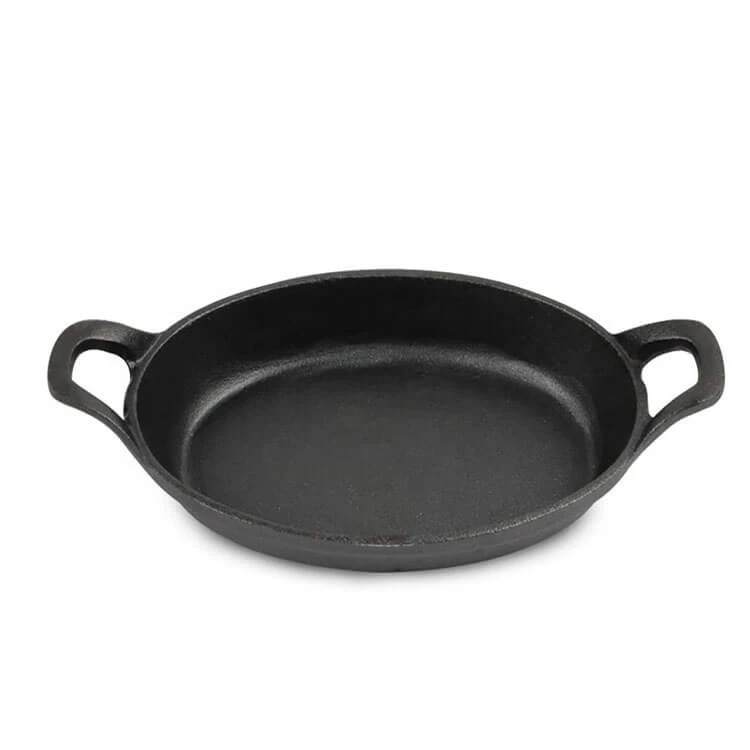
Understanding the Weight of Cast Iron Skillets for Better Cooking Choices
Understanding the Weight of Cast Iron Skillets
Cast iron skillets have been a staple in kitchens for centuries, celebrated for their durability, heat retention, and versatility in cooking. However, one aspect that often comes into play when choosing the right cast iron skillet is its weight. This feature can significantly impact usability, cooking performance, and storage considerations. In this article, we will explore the weight of cast iron skillets, why it matters, and how to select the right one for your culinary needs.
The Basics of Cast Iron Skillet Weight
Cast iron skillets are made from molten iron that is poured into molds, giving them their characteristic finish and weight. On average, a standard cast iron skillet weighs between 3 to 7 pounds (approximately 1.4 to 3.2 kg), depending on the size and design. Smaller skillets, such as the 8-inch models, tend to be lighter, while larger ones, like the 12-inch varieties, can weigh significantly more.
The substantial weight of cast iron skillets is often viewed as both an advantage and a drawback. Heavier skillets can retain heat more effectively, allowing for consistent cooking and browning. However, the weight can also make these skillets cumbersome for some individuals, particularly when moving them around the kitchen or transferring cooked food to serving dishes.
Advantages of a Heavier Skillet
One of the main benefits of a heavier cast iron skillet is its superior heat retention. The density of cast iron allows it to hold heat for longer periods, which is especially useful when searing meat or frying. This feature helps to achieve a perfect crust while locking in moisture, making cast iron skillets an excellent choice for a variety of cooking techniques, such as baking, frying, and braising.
Furthermore, the weight of a cast iron skillet lends stability to the cooking process. When placed on a burner, a heavier pan is less likely to wobble or move around, providing an even cooking surface. This stability is crucial when dealing with high-heat cooking or methodical techniques like flipping pancakes or sautéing vegetables.
cast iron skillet weight

Considerations for Lighter Skillets
While heavy cast iron skillets have their advantages, some consumers may prefer lighter options. Lightweight cast iron skillets, often referred to as seasoned or pre-seasoned, generally weigh less than their counterparts without sacrificing the benefits associated with cast iron cooking. These skillets are usually made with thinner cast iron and may be designed for specific types of cooking.
Lighter skillets can be easier to maneuver, making them a more approachable option for individuals who may find the weight of standard cast iron skillets overwhelming. They are also more suitable for certain cooking methods, such as quick sautés or delicate dishes that need meticulous handling. Ultimately, the choice between a heavier or lighter skillet depends on personal preferences and cooking habits.
Proper Care and Maintenance
Regardless of the weight of the cast iron skillet you choose, proper care is essential to maintaining its quality and longevity. Regular seasoning is crucial, as it helps to build a non-stick surface, enhances flavor, and prevents rusting. After each use, clean your skillet by scrubbing it gently with a brush and hot water; then dry it immediately to prevent moisture buildup. Apply a thin layer of cooking oil before storing it to keep it in excellent condition.
Conclusion
The weight of cast iron skillets is an essential factor to consider when selecting the right cookware for your kitchen. While heavier skillets offer unparalleled heat retention and stability, lighter options provide ease of use and maneuverability. Ultimately, the best choice will depend on your cooking style, preferences, and how comfortable you are with the weight of the skillet. By understanding the dynamics of cast iron and its various weights, you can make an informed decision that aligns perfectly with your culinary journey. So whether you’re an experienced chef or a novice cook, investing in a cast iron skillet will undoubtedly elevate your cooking experience, offering a blend of tradition and practicality in every dish.
-
Authentic Traditional Chinese Wok for High-Performance CookingNewsAug.02,2025
-
Season Cast Iron Perfectly with GPT-4 Turbo TipsNewsAug.01,2025
-
High Quality Cast Iron Cookware - Baixiang County Zhongda MachineryNewsAug.01,2025
-
Premium Cast Iron Pan: Durable & Perfect HeatNewsAug.01,2025
-
High Quality Kitchen Durable Black Round Cast Iron Cookware Pancake Crepe Pan-Baixiang County Zhongda Machinery Manufacturing Co., Ltd.NewsAug.01,2025
-
Cast Iron Cookware - Baixiang County Zhongda Machinery | Nonstick, Heat ResistanceNewsAug.01,2025


